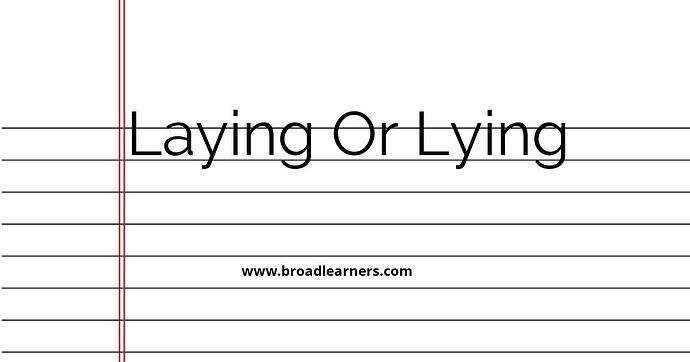'Laying' and 'lying' are commonly confused words in English grammar. Understanding the difference between 'laying' and 'lying' is important to use them correctly in written and spoken English.
'Laying' is a transitive verb that means to put or place something down in a horizontal or flat position. It requires a direct object. It is used when someone or something is actively putting or placing something down.
'Lying' is an intransitive verb that means to be in a horizontal or flat position, typically when resting or reclining. It does not require a direct object. It is used when someone or something is in a state of rest or reclining.
Let's take a closer look at the meanings and usage of 'laying' and 'lying'.
| 'Laying' | 'Lying' |
|---|---|
| The word 'laying' is a transitive verb that requires a direct object. | The word 'lying' is an intransitive verb that does not require a direct object. |
|
|
To remember the difference between 'laying' and 'lying', it can be helpful to remember that 'laying' is an action that requires a direct object, while 'lying' is a state of rest or reclining that does not require a direct object.
Here are some examples of correct usage:
- I am laying the table for dinner. (actively placing the plates and cutlery)
- The dog is lying in the shade. (in a state of rest)
- She laid the baby gently in the crib. (actively putting the baby down)
- He likes to lie on the couch and watch TV. (in a reclining position)
Remembering the correct usage of 'laying' and 'lying' will improve your grammar and communication skills.
